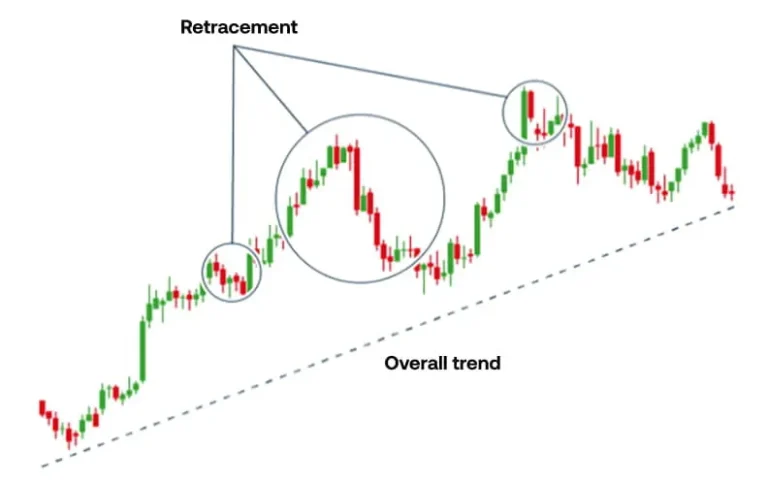Margin trading is a practice where investors borrow money from a broker to purchase securities, allowing them to leverage their investments. It's typically used by experienced traders seeking to amplify potential returns, but it also increases risk exposure.
- Main Benefit: Increased buying power and potential for higher returns
- Primary Concern: Amplified losses and risk of owing more than initial investment
- Best For: Experienced investors with high risk tolerance
- Important Note: Requires careful monitoring and understanding of market dynamics
Margin Trading: Advantages and Disadvantages
This table outlines the key pros and cons of margin trading, highlighting both the potential benefits and risks associated with this leveraged investment strategy.
| Pros | Cons |
|---|---|
| Increased buying power | Amplified losses |
| Potential for higher returns | Interest charges on borrowed funds |
| Ability to diversify portfolio | Risk of margin calls |
| Opportunity to capitalize on short-term market movements | Potential to lose more than initial investment |
| Access to premium stocks with less capital | Increased emotional stress due to higher risk |
| Flexibility in investment strategies | Complexity requires advanced market knowledge |
| Ability to short sell stocks | Forced liquidation of assets by broker |
| Leverage can magnify gains | Higher transaction costs |
| Potential tax benefits from interest deductions | Regulatory limitations and restrictions |
| Quick access to funds without selling existing positions | Increased vulnerability to market volatility |
| Opportunity to profit from both rising and falling markets | Risk of broker changing margin requirements |
| Enhanced liquidity for trading | Potential for overtrading and excessive risk-taking |
| Ability to act on time-sensitive opportunities | Difficulty in long-term investing due to interest costs |
| Potential for higher percentage returns on investment | Increased exposure to systemic market risks |
| Flexibility in managing cash flow | Possibility of negative equity in severe market downturns |
| Opportunity to earn dividends on larger positions | Risk of margin account freezes or restrictions |
| Ability to hedge existing positions | Potential for higher taxes on short-term gains |
| Potential for arbitrage opportunities | Increased susceptibility to market manipulation |
| Enhanced ability to average down on positions | Risk of broker errors affecting account balance |
| Opportunity to participate in larger trades | Potential for conflicts of interest with broker |
| Ability to take advantage of market inefficiencies | Increased exposure to counterparty risk |
| Potential for higher overall portfolio returns | Risk of margin rates increasing unexpectedly |
| Flexibility in timing of investment decisions | Potential for forced selling at inopportune times |
| Opportunity to profit from small price movements | Increased complexity in portfolio management |
| Ability to maintain existing positions while entering new ones | Risk of overlooking fundamental analysis due to leverage focus |
| Potential for faster account growth | Increased difficulty in risk assessment |
| Opportunity to capitalize on market momentum | Potential for overconfidence in trading abilities |
| Enhanced ability to implement complex trading strategies | Risk of becoming overly dependent on borrowed funds |
| Potential for higher income from options writing | Increased vulnerability to market rumors and speculation |
| Ability to take larger positions in high-conviction trades | Risk of underestimating the impact of leverage on returns |
Citations:
- 1. https://www.nasdaq.com/articles/pros-and-cons-buying-margin
- 2. https://www.religareonline.com/blog/what-is-margin-trading/
- 3. https://www.investopedia.com/terms/m/margin.asp
- 4. https://www.wallstreetmojo.com/margin-trading/
- 5. https://www.bajajbroking.in/blog/the-pros-and-cons-of-margin-trading
- 6. https://fyers.in/blog/what-is-margin-trading.html
- 7. https://www.bankrate.com/investing/buying-on-margin-costs-risks-and-rewards/
- 8. https://www.investopedia.com/terms/b/buying-on-margin.asp
- 9. https://www.businessinsider.com/personal-finance/investing/what-is-margin-trading-how-it-works
- 10. https://corporatefinanceinstitute.com/resources/wealth-management/margin-trading/
Margin Trading Market Overview
This table provides key statistics and market data on margin trading, highlighting its prevalence and impact in the financial markets.
| Statistical Analysis & Market Data | |
|---|---|
| Global margin debt (as of October 2024) | $815.37 billion |
| Year-over-year growth in margin debt | 28.35% increase |
| Percentage of retail investors using margin | Approximately 2% of all investors |
| Average margin interest rate (2024) | 8.5% - 10.5% |
| Margin trading volume as % of total trading volume | 15-20% of daily trading volume |
| Number of margin accounts in the US (2024) | Over 2 million |
| Average margin account balance | $25,000 - $30,000 |
| Margin call frequency | 2-3% of margin accounts per month |
| Margin trading popularity among age groups | Highest in 25-40 age bracket |
| Margin trading market share by broker type | Online brokers: 60%, Traditional brokers: 40% |
Margin Trading Requirements and Specifications
This table outlines the key technical requirements and specifications for engaging in margin trading, as mandated by regulatory bodies and common industry practices.
| Technical Specifications & Requirements | |
|---|---|
| Minimum initial margin requirement (US) | 50% of the purchase price of securities |
| Maintenance margin requirement (US) | 25% of the total market value of securities |
| Maximum leverage allowed (US) | 2:1 (buy up to 2x the cash balance) |
| Minimum account balance for margin trading | $2,000 (set by FINRA) |
| Eligible securities for margin trading | Most exchange-listed stocks, some ETFs, and bonds |
| Pattern Day Trader (PDT) rule threshold | 4 or more day trades in 5 business days |
| PDT minimum equity requirement | $25,000 |
| Margin call response time | Usually 2-5 business days |
| Regulatory body overseeing margin trading (US) | Securities and Exchange Commission (SEC) and FINRA |
| Required disclosures | Brokers must provide margin agreement and risk disclosure statement |
Margin Trading Cost and Value Analysis
This table provides an analysis of the costs associated with margin trading and potential value considerations for investors contemplating this strategy.
| Cost & Value Analysis | |
|---|---|
| Average margin interest rates (2024) | 8.5% - 10.5% annually |
| Potential return amplification | Up to 2x (with 50% margin) |
| Potential loss amplification | Up to 2x or more of initial investment |
| Break-even point | Stock must appreciate more than interest rate |
| Margin call threshold | Typically when equity falls below 30-35% |
| Average transaction costs | $0 - $6.95 per trade (varies by broker) |
| Opportunity cost | Interest paid vs. potential returns on cash |
| Tax implications | Interest is tax-deductible, may affect capital gains |
| Potential for forced liquidation | High, if unable to meet margin calls |
| Value of increased buying power | Access to larger positions, more diversification |
Margin Trading vs. Alternative Strategies
This table compares margin trading with alternative investment strategies, highlighting the key differences in risk, potential returns, and overall approach.
| Comparative Analysis & Alternatives | |
|---|---|
| Margin Trading vs. Cash Account | Higher potential returns and risks; requires interest payment |
| Margin Trading vs. Options Trading | Less time sensitivity; potentially lower risk than some options strategies |
| Margin Trading vs. Short Selling | Can be used for both long and short positions; different risk profile |
| Margin Trading vs. Leveraged ETFs | More flexible; no daily rebalancing issues; higher costs |
| Margin Trading vs. Futures Trading | Lower leverage; more diverse asset selection; different regulatory framework |
| Margin Trading vs. Peer-to-Peer Lending | Higher potential returns; more volatile; different risk factors |
| Margin Trading vs. Real Estate Investing | More liquid; potentially higher short-term returns; different tax implications |
| Margin Trading vs. Index Fund Investing | Higher risk and potential return; requires more active management |
| Margin Trading vs. Bonds | Higher risk and potential return; less stable income stream |
| Margin Trading vs. Cryptocurrency Trading | Generally lower volatility; more regulated; different risk factors |
Future Outlook of Margin Trading
This table explores potential future trends and developments in margin trading, considering technological advancements, regulatory changes, and evolving market dynamics.
| Future Outlook & Industry Trends | |
|---|---|
| Integration of AI and Machine Learning | Enhanced risk assessment and automated margin management |
| Regulatory changes | Potential for stricter oversight and adjusted margin requirements |
| Blockchain technology integration | Improved transparency and efficiency in margin lending |
| Expansion of eligible assets | Inclusion of more ETFs, cryptocurrencies in margin trading |
| Shift towards T+0 settlement | Faster trade settlement reducing some margin trading risks |
| Increased retail investor participation | Growing adoption among younger, tech-savvy investors |
| Cross-border margin trading | Potential for global margin accounts and international diversification |
| Enhanced risk management tools | Development of sophisticated platforms for real-time risk assessment |
| Impact of market volatility | Potential for adjusted margin requirements in high-volatility periods |
| Environmental, Social, and Governance (ESG) considerations | Integration of ESG factors in margin lending decisions |







